海苔 養殖業 発祥の地
のりようしょくぎょうはっしょうのち
京浜東北線 大森駅東口駅前広場の一角、もともと花壇があった場所に金属フレーム内に多数のパネルをあしらった記念碑が設置され、令和2年(2020)3月に疫病対策を気にしつつひっそり除幕された。
時は江戸時代、5代綱吉の貞享(1684~1688)〜元禄(1688~1704)の20年余に100回以上発したとも言われる「生類憐みの令」によって、江戸の漁業までが禁止された。大田区発行大田区史によると、困った浅草の漁師達は大森に移住し漁業を続けることになった。浅草神社氏子達が大森に移住したが、氏子であり続けた記録が浅草神社に残されている。
この漁業者の集団移住によって、大森に浅草の情報が伝わることとなった。
当時から大森や品川では既に海苔の養殖を生業としていたが、生海苔は日持ちがしなかったので自家消費用で、雑炊や汁に入れて食べていた。浅草でも海苔の生産はあり販売もされていたが量的には少なく、葛西方面からも運ばれていたという。
そのような時に、大森村 堀の内(現在の大森中3丁目)の百姓、野口六郎左衛門 (1592~1682)は、浅草の地場産業だった再生紙抄造を真似て、海苔を使って紙漉きを開始。出来上がった乾し海苔は浅草の問屋に販売を依頼、これを「浅草海苔」と名付けて販売した。
これにより大森の海苔養殖は産業に発展した。
「浅草から江戸の情報が伝わった」というのはピンとこないかもしれないが、品川宿までが江戸だったためそれよりも外の大森は江戸ではなかった。ただし、大森貝塚遺跡が発見されるなど、人の営みはかなり古くからつづいていた。
写真
碑文
海苔
養殖業
発祥の地歴史
日本人と海苔
1300 年以上前から日本人に食べられてきた海苔。 飛鳥時代に制定された「大宝律令」(701 年)には海苔が税の一種としてあげられており、また平安時代の宇治平等院の落成の祝膳にも海苔が供されていました。
Tradition
Nori has been eaten by the Japanese for over 1300 years. Nori was one of the items that were paid as tax under the “Taiho-Ritsuryo (Taiho code)” (701) enacted in the Asuka period, and it was recorded to be served in a feast to celebrate the completion of Uji Byodo-in built during the Heian period.
発祥
海苔養殖業の始まり
海苔養殖は江戸時代前期の延宝年間(1673 年~ 1680 年)頃にこの付近の海岸で始められたと言われ、享保年間(1716 年~ 1736年)には大森地域で産業としての海苔養殖が確立されました。
Cultivation
Nori cultivation is said to have begun on the nearby coast in the early years of the Edo period, around Empo era (1673 to 1680). By mid-Edo period, Kyoho era (1716 to 1736), Nori cultivation was established as an industry in Omori era.
大森
日本一の生産地、大森
明治、大正、昭和の初めまで大森の海苔生産量は全国一位。また、その品質も極めて高く、江戸時代には徳川幕府に「御膳海苔」として上納されており、その後も大森は海苔の「本場」として全国に確固たる名声を築いてきました。
Omori
e amount of Nori produced in Omori's was No. 1 in Japan from Meiji, Taisho through to early Showa eras. In addition, its quality was extremely high, so it was o ered to the Tokugawa Shogunate as "Gozen Nori" . Omori is well known to be the “Homba(main place)” of Nori, nationwide.
発展
大森から日本全国へ
江戸時代後期には、全国各地で新たに海苔養殖をするために地方へ招かれた大森の海苔漁師や、冬の農閑期に大森で海苔に携わった信州の商人などにより、大森から日本全国へその養殖技術が伝えられていきました。
Di usion
By the later Edo period, the techniques of Nori cultivation was spread all over Japan, by Omori nori shermen who were invited to introduce the method, and Shinshu merchants who engaged in Nori cultivation during the winter, when agriculture was o ff-season.
継承
大森の海苔問屋
東京港の埋立改修工事のため1963年春に東京の海苔養殖は終焉を迎えましたが、大森の本場海苔問屋はその卓越した目利きの技を活かし商売を続け、現在も多くの海苔問屋が集中する日本一の海苔問屋街として栄えています。
Succession
Due to the renovation of Tokyo Port, Nori cultivation in Tokyo Bay came to an end in the spring of 1963. But by their expertise, Omori's Nori wholesalers continues their business until the present day. Omori still has a prosperous wholesaler street, which has a high concentration of Nori wholesalers.
ご協力を頂いた方々
(法人・団体・個人の芳名)
記念碑について
この記念碑は、江戸期から昭和まで、収穫した海苔を天日乾燥するため使われていた、「海苔の枠干し」をモチーフにしたものです。当時、大森の海岸付近ではどこでも見ることの出来る冬の風物詩でした。現在、大森ふるさとの浜辺公園にある「大森 海苔のふるさと館」は、大田区沿岸の海苔養殖の歴史と文化を次世代に伝えることを目的とした施設で、海苔養殖に関する重要有形民俗文化財などを所蔵、展示しています
About the monument
is monument is designed based on a “Nori-no-wakuboshi” motif, which was used to dry Nori under the sun, from the Edo period to the Showa era. It was a common sight in winter, that could be seen anywhere near the Omori coast.
Omori Nori-no-furusato Museum, currently located in Omori Furusato-no-Hamabe Park, is a facility that aims to convey the history and culture along the coast of Ota Ward to the next generation. It houses and exhibits numerous facts of art and history, concerning Nori cultivation.2020 年4 月 大森本場乾海苔問屋協同組合
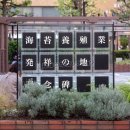
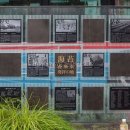
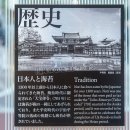



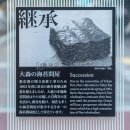
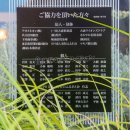
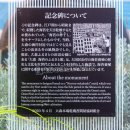

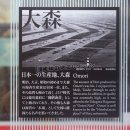
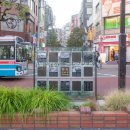
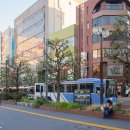

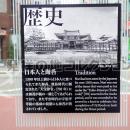
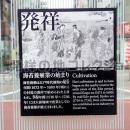


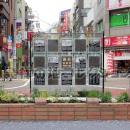

コメント